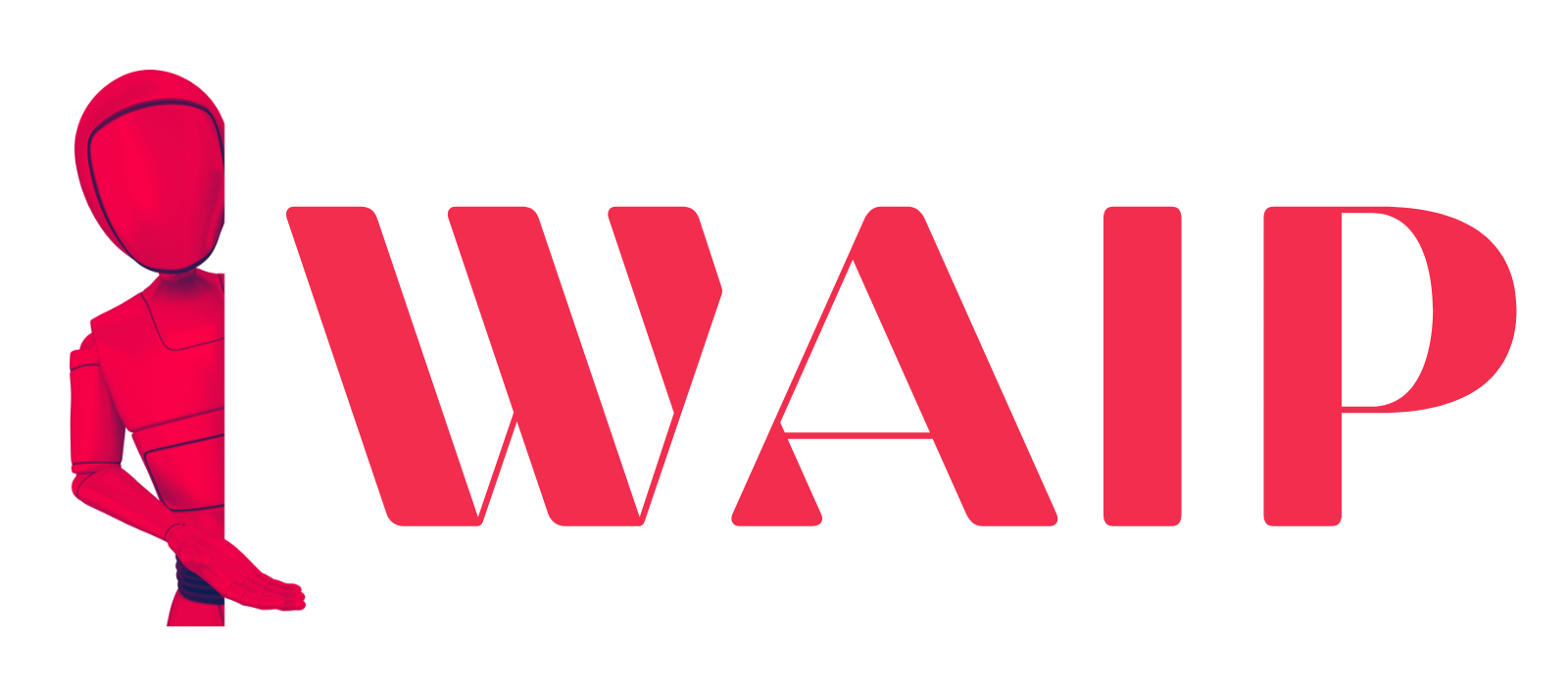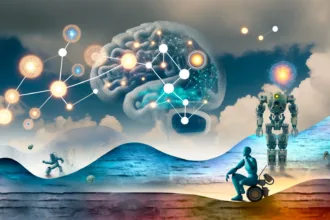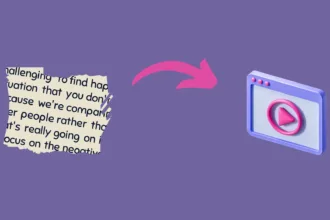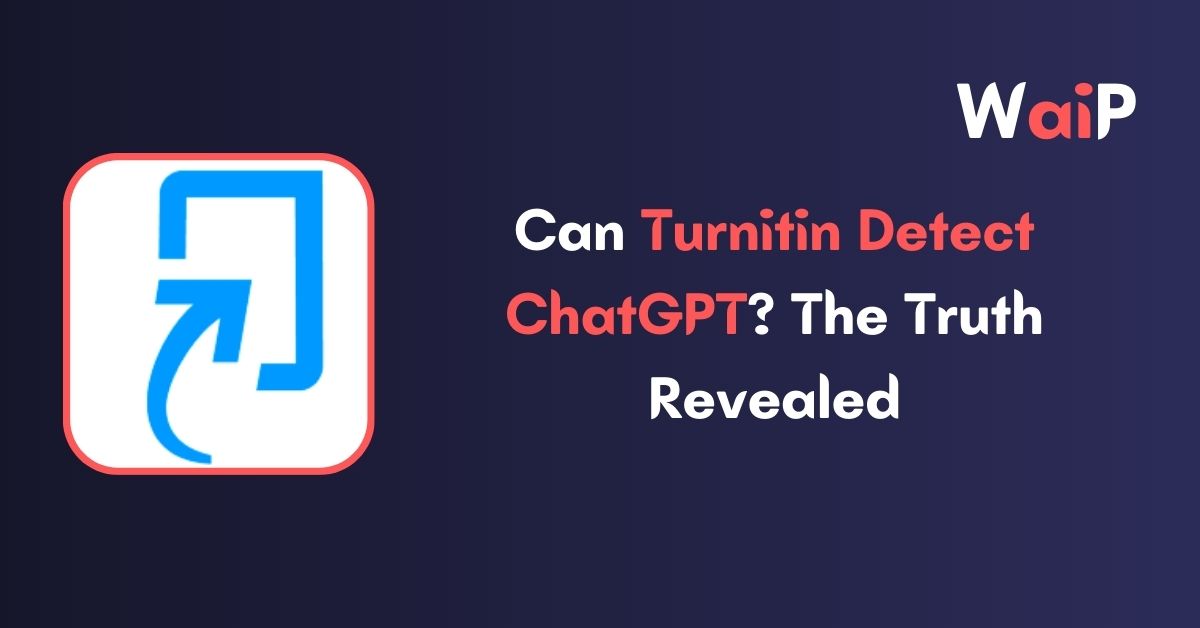As technology keeps advancing, there are new questions about how Artificial Intelligence and education connect. One important question people are asking is that Can Turnitin Detect ChatGPT, a popular plagiarism detection software, can find content created by ChatGPT.
ChatGPT is a smart program made by OpenAI that can write text that looks like it was written by a person. This makes it difficult for plagiarism detectors.
In this blog post, we will explore this interesting topic and explain how Turnitin can spot text made by AI, including ChatGPT.
ChatGPT: A New Challenge for Turnitin?

Given ChatGPT’s capacity to produce unique, high-quality content, it’s only natural to question whether Turnitin can effectively detect such AI-generated text. As it stands, Turnitin operates by comparing submitted work to an extensive database of academic papers and web-based content to identify overlaps.
However, since the text generated by ChatGPT is original, it does not directly copy from existing sources, potentially making it challenging for Turnitin to detect such content. This leads us to the question – does Turnitin possess the ability to recognize patterns or styles typical of AI-generated text, such as content produced by ChatGPT?
What is Turnitin & How It is Work

Turnitin is a software that helps educational institutions find instances of plagiarism in written work. It works by comparing a student’s work with a large collection of papers and online sources.
When a document is submitted to Turnitin, it generates a report that shows any similarities found and assigns a similarity score, which represents the percentage of text that matches other sources.
To detect plagiarism, Turnitin uses a combination of algorithms and machine learning. It breaks down the submitted document into smaller parts and compares them to its database.
The software looks for similarities in language, sentence structure, and vocabulary between the document and the sources in the database. Additionally, Turnitin’s machine learning algorithms can identify patterns that may indicate plagiarism.
How Turnitin Detect ChatGPT Generated Text
Turnitin has the capability to detect ChatGPT-generated text, although the process is not straightforward. ChatGPT, being an AI language model, produces text that can closely resemble human writing, making it challenging for plagiarism detection software.
However, Turnitin’s text-matching algorithms are designed to go beyond exact matches. They analyze sentence structures, vocabulary choices, and syntax to identify similarities. Turnitin can recognize patterns in language usage that may indicate plagiarism, even if the text is not an exact replica of an existing source.
Furthermore, Turnitin is equipped to detect text manipulation techniques like paraphrasing and summarizing. If the text generated by ChatGPT appears to be a modified version of existing content, Turnitin can flag it as suspicious.
Turnitin continually expands its database, incorporating more sources and content generated by AI language models. The software acknowledges the growing prevalence of AI-generated text and actively works on developing new techniques to identify it accurately.
How to Detect ChatGPT Generated Text Using Turnitin

- Generate text using ChatGPT: The first step is to generate text using ChatGPT. You can do this by visiting the ChatGPT website and entering your prompt.
- Upload the text to Turnitin: Once you have generated the text, you need to upload it to Turnitin. You can do this by logging into your Turnitin account and clicking on the “Upload” button.
- Check for patterns: Once the text has been uploaded, you need to check for patterns. Look for patterns in the text that are similar to patterns in known ChatGPT generated text. For example, ChatGPT often uses the phrase “I’m sorry, I don’t understand.” If you see this phrase in the text, it may be a sign that the text was generated by ChatGPT.
- Check for unusual word choice: Check for unusual word choice. ChatGPT sometimes uses words or phrases that are not commonly used in academic writing. For example, ChatGPT might use the word “whilst” instead of “while.” If you see unusual word choice in the text, it may be a sign that the text was generated by ChatGPT.
- Check for grammatical errors: ChatGPT is not perfect, and it sometimes makes grammatical errors. If you see grammatical errors in the text, it may be a sign that the text was generated by ChatGPT.
How to Use ChatGPT to Help Write Your Academic Essay
ChatGPT can help you with your academic writing in several ways. It can generate ideas, help you organize your thoughts, and write your introduction and conclusion.
However, it is important to remember that ChatGPT is not a substitute for your own writing. You should use it as a tool to help you, but you should not let it write your entire essay for you.

Here are some specific examples of how ChatGPT can be used:
- You can give ChatGPT a prompt, such as “What are the benefits of using ChatGPT for academic writing?”, and it will generate a list of ideas.
- You can give ChatGPT a prompt, such as “How would you structure an essay on the benefits of using ChatGPT for academic writing?”, and it will generate a list of possible structures.
- You can give ChatGPT a prompt, such as “Write an introduction for an essay on the benefits of using ChatGPT for academic writing,” and it will generate a possible introduction.
- You can give ChatGPT a prompt, such as “Write a conclusion for an essay on the benefits of using ChatGPT for academic writing,” and it will generate a possible conclusion.
It is important to note that ChatGPT is not perfect. It may sometimes generate incorrect or misleading information. It is important to use your own judgment and critical thinking skills when using ChatGPT.
Turnitin’s Stand Against AI-Generated Text
While Turnitin has been enhancing its technology to keep pace with evolving AI writing tools, it does not possess a foolproof mechanism to detect AI-generated text consistently.
That said, Turnitin has been proactive in developing AI detection capabilities to identify patterns characteristic of AI-generated content. This technology analyses the submitted work and searches for specific traits common in AI-produced content, thus providing a line of defense against AI-aided plagiarism.
However, the technology isn’t perfect. It could generate false positives, flagging human-written content as AI-generated. Moreover, as AI models such as ChatGPT continue to advance, the effectiveness of this AI detection technology might be challenged.
How can you avoid being Turnitin Detect ChatGPT?
While Turnitin can find text generated by ChatGPT, there are ways to avoid detection. However, it is important to note that plagiarism is not encouraged or supported, and the following tips are for educational purposes only.

Check the originality report
Before submitting your document, run it through Turnitin and review the originality report. The report shows any matches found and assigns a similarity score to the document.
If the report indicates a high similarity score, it suggests that Turnitin has detected similarities. Carefully review the report and check the flagged sources. If necessary, rewrite or edit the text to ensure it is unique and undetectable by Turnitin.
Make your prompts and topics unique to avoid Turnitin Detect ChatGPT
Turnitin compares submitted documents with existing sources. If your prompts and topics are different from others, it will be harder for Turnitin to find matches in its database.
By customizing your prompts and topics, you can make the text generated by ChatGPT unique and less likely to be detected by Turnitin. This may require more effort, but it is an effective way to avoid detection.
Rewrite the text in your own words
If you use ChatGPT to create content for academic purposes, consider rewriting the text in your own words. Although this may take more time, it is a reliable way to avoid detection.
Rewriting the text makes it more difficult for Turnitin to find exact matches and reduces the risk of being flagged for plagiarism. It also shows a deeper understanding of the topic and improves your writing skills.
Paraphrase effectively to avoid Turnitin Detect ChatGPT
If you use ChatGPT to create content, try paraphrasing existing sources accurately. Paraphrasing means expressing the same ideas in your own words without changing the meaning.
Effective paraphrasing makes it harder for Turnitin to find matches, reducing the risk of being flagged for plagiarism. However, be cautious not to make the paraphrased text too similar to the original, as it can still be detected by Turnitin.
Use plagiarism detection software to prevent Turnitin Detect ChatGPT
Before submitting your document, consider using plagiarism detection software like Grammarly or Plagiarism Checker X. These tools can help identify any matches and ensure that your work is unique and undetected by Turnitin.
Best 5 Turnitin alternatives to detect ChatGPT Content
Writefull: It uses a variety of methods to detect plagiarism, including detecting ChatGPT generated text. It also offers grammar checking and style checking.
Grammarly: It is a well-known grammar checker that also offers plagiarism detection features. It can detect ChatGPT generated text, and it also offers style checking and vocabulary enhancement.
Plagiarism Today: It is a plagiarism detection service that uses a variety of methods to detect plagiarism, including detecting ChatGPT generated text. It also offers a plagiarism checker for images and a plagiarism checker for code.
Plagiarism Detector: It is a free plagiarism detection service that uses a variety of methods to detect plagiarism, including detecting ChatGPT generated text. It is a good option for students and researchers who are looking for a free plagiarism detection service.
PlagScan: It is a plagiarism detection service that uses a variety of methods to detect plagiarism, including detecting ChatGPT generated text. It is a good option for businesses and organizations that need to detect plagiarism in large volumes of text.
Effective Measures Against ChatGPT Misuse
Despite the uncertainties surrounding Turnitin’s ability to detect ChatGPT, educators can still take proactive steps to maintain the integrity of academic assignments:
- Proctoring Tools: Implementing tools that monitor students’ computer activities during exams can help catch suspicious behavior indicative of AI tool usage.
- Plagiarism Detection Software: Though ChatGPT text may not be technically plagiarized, it is essential to continue using plagiarism detection tools to catch any traditional copying.
- Clear Communication: Convey your institution’s academic integrity policy clearly to students, emphasizing that utilizing AI tools like ChatGPT for assignments constitutes academic dishonesty.
- Be Watchful: Be vigilant for signs of potential AI usage, such as sudden improvements in a student’s writing quality or suspiciously perfect assignment submissions.
FAQs: Can Turnitin Detect ChatGPT
What does “Can Turnitin Detect ChatGPT” mean?
“Can Turnitin Detect ChatGPT” refers to whether the plagiarism detection software Turnitin can identify text that has been generated by the AI language model, ChatGPT.
How does Turnitin detect ChatGPT-generated text?
Turnitin can detect ChatGPT-generated text through its text-matching algorithms that analyze sentence structures, vocabulary choices, and syntax to identify similarities. The software recognizes patterns in language usage that may indicate plagiarism, even if the text is not an exact replica of an existing source.
Can Turnitin always accurately detect AI-generated text like ChatGPT’s output?
While Turnitin is enhancing its technology to keep up with evolving AI writing tools, it doesn’t have a foolproof mechanism to consistently detect AI-generated text. As AI models like ChatGPT continue to advance, the effectiveness of Turnitin’s AI detection technology might be challenged.
How can one avoid having ChatGPT-generated content detected by Turnitin?
To avoid detection, one can review the originality report from Turnitin before submitting the document, customize prompts and topics to make the ChatGPT-generated text unique, rewrite the text in their own words, paraphrase effectively, and use other plagiarism detection software.
What measures can educators take against misuse of ChatGPT in academic assignments?
Educators can implement proctoring tools to monitor students’ computer activities during exams, continue using plagiarism detection tools, communicate the institution’s academic integrity policy clearly to students, and be watchful for signs of potential AI usage, such as sudden improvements in a student’s writing quality or suspiciously perfect assignment submissions.
Conclusion
The ability of Turnitin Detect ChatGPT-generated content is a complex and evolving issue. As it stands, while measures are in place to identify AI-generated text, they are not flawless.
Therefore, educators and institutions need to remain vigilant and proactive, using a combination of tools and clear communication to uphold academic integrity.
As we navigate this new frontier where AI and education intersect, it’s essential to foster an environment where AI tools like ChatGPT are used as aids to learning, not shortcuts to success.

![Best Mobile Games Your Should Try in 2024 [Trending Now] 2 Best Mobile Games](https://wideaiprompts.com/wp-content/uploads/2024/03/Best-Mobile-Games-330x220.webp)



![Best Mobile Games Your Should Try in 2024 [Trending Now] 14 Best Mobile Games](https://wideaiprompts.com/wp-content/uploads/2024/03/Best-Mobile-Games-150x150.webp)


